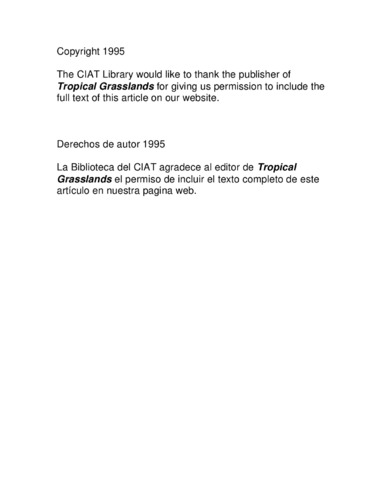Recent advances in studies of anthracnose of Stylosanthes. III. Stylosanthes breeding approaches in South America
Evaluation of natural Stylosanthes germplasm leading to the release of 8 commercial cultivars began in South America in the late 1960s and early 1970s. Perceived deficiencies in existing germplasm, including anthracnose susceptibility, led to the initiation of Stylosanthes breeding projects as early as 1979. Four of these programs are described. While each breeding project has made demonstrable progress towards stated objectives, to date, no bred Stylosanthes cultivar has been commercialised in South America. The reasons for this lack of commercial success are a lack of interest or demand for forage legume technology in the region, and deficiencies in the products of Stylosanthes breeding projects such as lack of persistence and poor seed yield under grazing. Recent breeding and selection work in Brazil, which builds upon lessons learned from past experiences, may lead to success in the near future.

